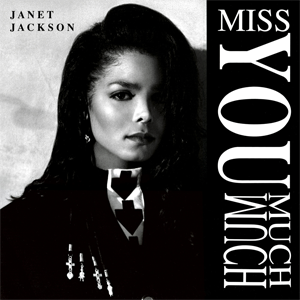
"Miss You Much" is a song by American singer Janet Jackson. Composed by songwriters and record producers Jimmy Jam and Terry Lewis, it was recorded for the singer's fourth studio album, Janet Jackson's Rhythm Nation 1814 (1989). As with all tracks for the album, recording took place at Lewis and Jam's Flyte Tyme Studios in Minneapolis, Minnesota between 1988 and 1989. Lyrically, the song narrates a longing to reconnect with a romantic partner after time spent apart.
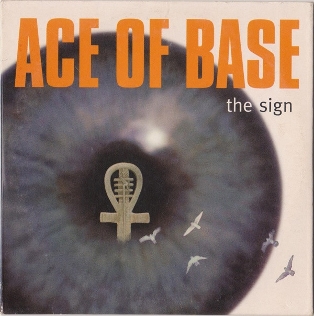
"The Sign" is a song by Swedish group Ace of Base from their first North American studio album, The Sign (1993), and their re-released debut studio album, Happy Nation (1992), titled Happy Nation . The song was released by Arista and Mega as a single in Europe on 1 November 1993 and the US on 14 December 1993. It was written by band member Jonas Berggren, who also produced the song with Denniz Pop and Douglas Carr. "The Sign" is a techno-reggae, Europop, and pop ballad with lyrics describing a couple contemplating the state of their relationship.

"Love Rollercoaster", sometimes rendered as "Love Roller Coaster", is a song by American funk/R&B band Ohio Players, originally featured on their 1975 album Honey. It was composed by William Beck, Leroy Bonner, Marshall Jones, Ralph Middlebrooks, Marvin Pierce, Clarence Satchell, and James Williams. It was a number-one U.S. hit in January 1976, and was certified gold. In Canada, the song spent two weeks at number two. "Love Rollercoaster" was covered by American rock band Red Hot Chili Peppers for the soundtrack of the 1996 animated movie Beavis and Butt-Head Do America.

"Beautiful Life" is a song by Swedish band Ace of Base, released on 20 October 1995 from their second album, The Bridge (1995). In North America, it was the first single released from the album; in Europe, it followed "Lucky Love" as the second single. Co-written by band member Jonas Berggren and produced by him with Denniz Pop and Max Martin, the single reached number 15 on both the US Billboard Hot 100 and the UK Singles Chart in December 1995. It reached number one on the Canadian RPM Dance/Urban chart and Billboard's Hot Dance Club Play chart. In 2017, BuzzFeed ranked "Beautiful Life" number 51 in their list of The 101 Greatest Dance Songs Of the '90s.
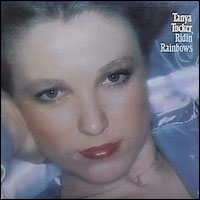
Ridin' Rainbows is the seventh studio album by American country music singer Tanya Tucker. It was released on February 14, 1977, by MCA Records. The album was produced by Jerry Crutchfield and includes three top 20 hits; "Ridin' Rainbows", "It's a Cowboy Lovin' Night" and "Dancing the Night Away".

"Hard Luck Woman" is a song by American hard rock band Kiss and the lead single from their 1976 album, Rock and Roll Over. It was originally written by Paul Stanley as a possible track for Rod Stewart, but after the success of the soft rock ballad "Beth", Kiss decided to keep it for themselves as a follow-up. Stanley has stated his admiration and love of Stewart's music numerous times, and that "Hard Luck Woman" was inspired by Rod Stewart, in particular the songs "Maggie May" and "You Wear It Well". While Stewart's music served as a partial inspiration for the song, the nautical themed song "Brandy" by American pop-rock band Looking Glass served as Stanley's main inspiration.

"How Long" is the debut single by the English band Ace, from their 1974 debut album, Five-A-Side. It reached No. 3 on both the US and Canadian charts, and No. 20 on the UK Singles Chart.
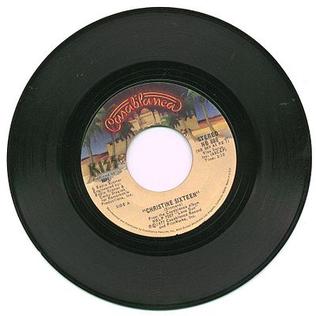
"Christine Sixteen" is a song by American hard rock band Kiss. It originally appeared on their 1977 album Love Gun. Released as a single in the US in 1977, the song peaked at number 25 on the Billboard Hot 100 chart that year, and did well in Canada, peaking at number 22.

"Fly Like an Eagle" is a song written by American musician Steve Miller for the album of the same name. The song was released in the United Kingdom in August 1976 and in the United States in December 1976. It went to number two on the US Billboard Hot 100 for the week of March 12, 1977. The single edit can be found on Greatest Hits (1974–1978). It is often played in tandem with "Space Intro". On the album, the song segues into "Wild Mountain Honey".

"Amazing" is a song by American hard rock band Aerosmith.

"Lyin' Eyes" is a song written by Don Henley and Glenn Frey and recorded in 1975 by the American rock band Eagles, with Frey singing lead vocals. It was the second single from their album One of These Nights, reaching No. 2 on the Billboard Hot 100 chart and No. 8 on the Billboard Country chart. It remained their only top 40 country hit until "How Long" in 2007–2008.

"Take It to the Limit" is a song by the Eagles from their fourth album One of These Nights from which it was issued as the last third single on November 15, 1975. It reached No. 4 on the U.S. Billboard Hot 100 and was also Eagles' greatest success to that point in the United Kingdom, going to No. 12 on the charts. Billboard ranked it as the No. 25 song for 1976.

"Lorelei" is a song from rock band Styx. It is on their 1975 album Equinox, and was released as a single in 1976.
Howard Russell Smith was an American singer and songwriter. He was the lead singer of the groups The Amazing Rhythm Aces and Run C&W. As a solo artist, he released four studio albums and charted five singles on the Billboard Hot Country Singles chart between 1984 and 1989.
"Look Heart, No Hands" is a song written by Trey Bruce and former Amazing Rhythm Aces member Russell Smith, and recorded by American country music artist Randy Travis. It was released in November 1992 as the only new single for his Greatest Hits, Volume Two compilation. Travis' rendition of the song was a Number One hit for him in early 1993, spending two weeks at the top of the Billboard country singles charts.

"Third Rate Romance" is a song written by Russell Smith, first recorded in Montreal in 1974 by Jesse Winchester and his band the Rhythm Aces, assisted by Smith. It became a hit the following year by the newly re-formed Amazing Rhythm Aces on its 1975 album Stacked Deck. It was the band's debut single, reaching No.11 on the U.S. country singles chart and No.14 on the Billboard Hot 100, as well as No.1 on the Canadian RPM Country Tracks and Top Singles charts.

"Say You Love Me" is a song written by English singer-songwriter Christine McVie for Fleetwood Mac's 1975 self-titled album. The song peaked at No. 11 on the Billboard Hot 100 for three weeks, and remains one of the band's most recognizable songs. Its success helped the group's eponymous 1975 album sell over eight million copies worldwide.
"The Tip of My Fingers", also titled "The Tips of My Fingers", is a song written and originally recorded by American country music singer Bill Anderson. First included on his 1962 album Bill Anderson Sings Country Heart Songs, the song was a Top Ten country single for him in 1960.
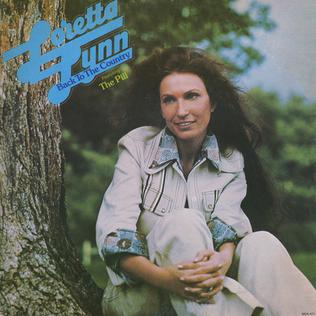
Back to the Country is the twenty-fifth solo studio album by American country music singer-songwriter Loretta Lynn. It was released on February 3, 1975, by MCA Records.
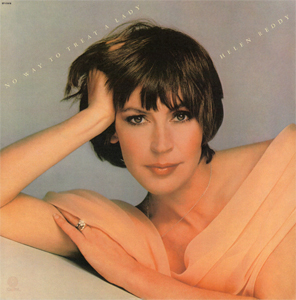
No Way to Treat a Lady is the seventh studio album by Australian-American pop singer Helen Reddy that was released in the summer of 1975 by Capitol Records and found Reddy tackling country pop, bossa nova and blues. The album debuted on Billboard's Top LP's & Tapes chart in the issue dated July 12, 1975, and peaked at number 11 over the course of 34 weeks, and on the album chart in Canada's RPM magazine it got as high as number 13. On January 19, 1976, the Recording Industry Association of America awarded the album with Gold certification for sales of 500,000 copies in the United States, and on August 23, 2005, it was released for the first time on compact disc as one of two albums on one CD, the other album being her 1976 release, Music, Music.
















